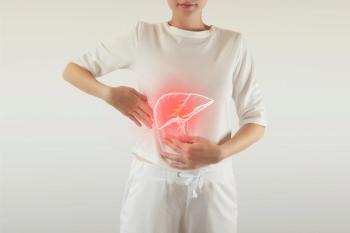
Ovarian masses in adolescents
Ovarian masses are uncommon findings in adolescent females.
Key Points
Ovarian masses are uncommon findings in adolescent females. Most of these masses are benign, but pediatricians should be aware of how they can present and should include ovarian masses in their differential diagnosis of lower abdominal pain, which is a common complaint in this patient population. Pediatricians who are comfortable with gynecologic issues can manage many ovarian masses themselves, including ovarian cysts, the most common condition. This article reviews the common etiologies, presentation, and management of ovarian masses in postmenarchal adolescent females.
Fortunately, most ovarian masses in adolescents are benign; only 10% of ovarian lesions in adolescents are cancerous.1 The incidence of pediatric ovarian neoplasms is 2.6 per 100,000 girls.2 Approximately 2% of all ovarian cancers occur in female patients aged less than 25 years.2 The most common ovarian tumors in adolescence are germ cell tumors, accounting for 55% of ovarian tumors in this patient population.3,4 Malignant ovarian tumors are not associated with any specific symptoms.1 On ultrasound, masses with features such as multiloculations, papillations, increased blood flow, or solid elements may suggest a malignancy.5
When to suspect an ovarian mass
Obtaining a thorough patient history may also help in the diagnosis of ovarian masses. When an adolescent presents with a complaint of lower abdominal pain, the physician should elicit information about the onset, duration, and quality of the abdominal pain to help distinguish a benign cyst from an ovarian torsion, which constitutes a surgical emergency. Irregular menses can be the result of an ectopic pregnancy, endocrinologically active tumor, or pelvic inflammatory disease (PID). Signs of hyperandrogenism, such as acne or male-pattern hair distribution, suggest a sex cord-stromal tumor.2 Every patient should be asked about sexual activity, contraceptive use, and exposure to sexually transmitted infections to evaluate the risk for PID, tubo-ovarian abscess (TOA), or ectopic pregnancy.
Review of systems should focus on possible constitutional, gastrointestinal, or urinary symptoms. Fever, along with lower abdominal pain, suggests a diagnosis of PID, TOA, or ovarian torsion. Nausea, vomiting, constipation, or increased urinary frequency may be secondary to a large ovarian mass.1
Laboratory tests and imaging
In patients with abdominal pain and a history of sexual activity, a pregnancy test should be obtained to determine pregnancy status and to rule out ectopic pregnancy. Additional laboratory and imaging studies may be needed to exclude nongynecologic causes for the pain. The need for further laboratory tests to investigate gynecologic causes depends on the patient's signs and symptoms. For the patient who looks pale or has a documented fever, a complete blood count (CBC) and erythrocyte sedimentation rate (ESR) or C-reactive protein (CRP) should be obtained. Free testosterone and dehydroepiandrosterone sulfate (DHEAS) should be assessed in patients with signs of hyperandrogenism, including irregular menses.1 Patients should be tested for gonorrhea and chlamydia, and assessments of thyroid-stimulating hormone (TSH), free T4, and prolactin should be performed to assess for infectious and endocrine causes of irregular menses and ovarian masses.
Abdominal ultrasound (transvaginal ultrasound in sexually active adolescents), an important diagnostic tool, should be performed in adolescents with a suspected ovarian mass demonstrated by a palpable abdominal mass or adnexal mass. Consider an ultrasound in adolescents with a negative workup for nongynecologic causes of lower abdominal pain. An ultrasound clarifies mass location, size, and components (cystic, solid, complex, or calcified).1 Transvaginal ultrasound is superior in identifying smaller lesions and internal lesion features.3 Although the use of 3-dimensional ultrasound to detect ovarian masses has not been studied in adolescents, research in adults suggests that this method aids in distinguishing benign masses from malignant masses.8 If the diagnosis is unclear from the ultrasound images, computed tomography (CT) or magnetic resonance imaging (MRI) should be ordered.3,5 Depending on the imaging results, the patient should be referred to an adolescent medicine specialist, gynecologist, oncologist, or surgeon; other masses can be managed by an experienced pediatrician. If an ovarian mass is not visualized, the pediatrician should re-evaluate the patient for nongynecologic causes of abdominal pain.
If cancer is suspected after an ultrasound, the patient should be referred to a pediatric oncologist. Tumor markers can be useful for detecting and monitoring particular ovarian masses in these patients; these markers include cancer antigen (CA-125) for epithelial tumors; carcinoembryonic antigen (CEA) for epithelial and germ cell tumors; beta-human chorionic gonadotropin (beta-hCG) for germ cell tumors and choriocarcinoma; alpha-fetoprotein for germ cell tumors, endodermal sinus tumors, and embryonal cell carcinomas; inhibin for sex cord-stromal tumors; and lactate dehydrogenase (LDH) for dysgerminomas.1,3,9
Newsletter
Access practical, evidence-based guidance to support better care for our youngest patients. Join our email list for the latest clinical updates.














